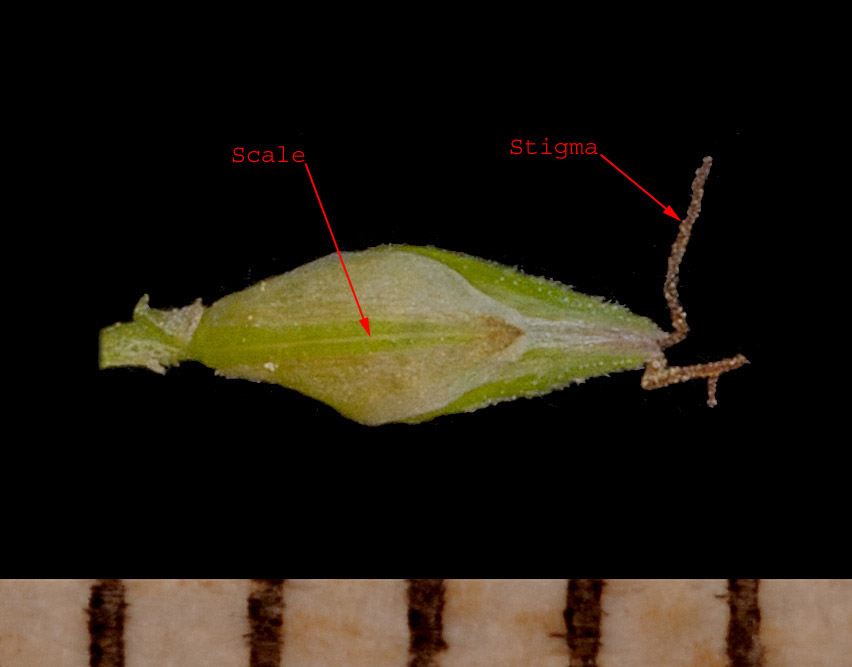
Eastern Star Sedge
Carex radiata

Eastern Star Sedge
Scale and Perigynium, Abaxial Side
4.1 km South of Intersection of Highways 980 and 981,
East Side of Road
31-May-2016
The stigmas pictured here are 0.075 mm wide. This is larger than the reported width for C. radiata (0.03 mm - 0.06 mm) and within the reported range of C. rosea (0.07 - 0.10 mm) (see here, open in new window if necessary). However, I have still identified these specimens as C. radiata because the stigmas are long and mostly uncoiled. In addition, the leaves of these specimens are just under 2 mm wide which places them within the range of C. radiata. The leaves of C. rosea tend towards 3 mm wide. See here.
Note the scale is about half the length of the perigynium. Note also the two stigmas.
I believe this is the first occurrence of this species in Saskatchewan. My friend Dave Biggs of Hudson Bay and I discovered this specimen while looking for some uncommon violets that Dave had observed in the same area on previous years. The location is forested, heavily shaded, and seasonally wet at the base of the Porcupine Hills.
This species is a member of section Phaestoglochin. The following characteristics are sufficient to distinguish C. radiata from all other Saskatchewan Carex species:
|
Two stigmas | |
|
More than two spikes | |
|
Cespitose habit | |
|
Spikes all androgynous. This distinguishes this species from members of Section Glareosae because all members of Glareosae have gynecandrous spikes. | |
|
Proximal spikes very remote, internode distance equal to multiple spike lengths. | |
|
Length of lowest spike bract ranging to more than 5 cm. |
This is a species of the eastern United States. The Flora of North America states that this species is found in Manitoba but not Saskatchewan.